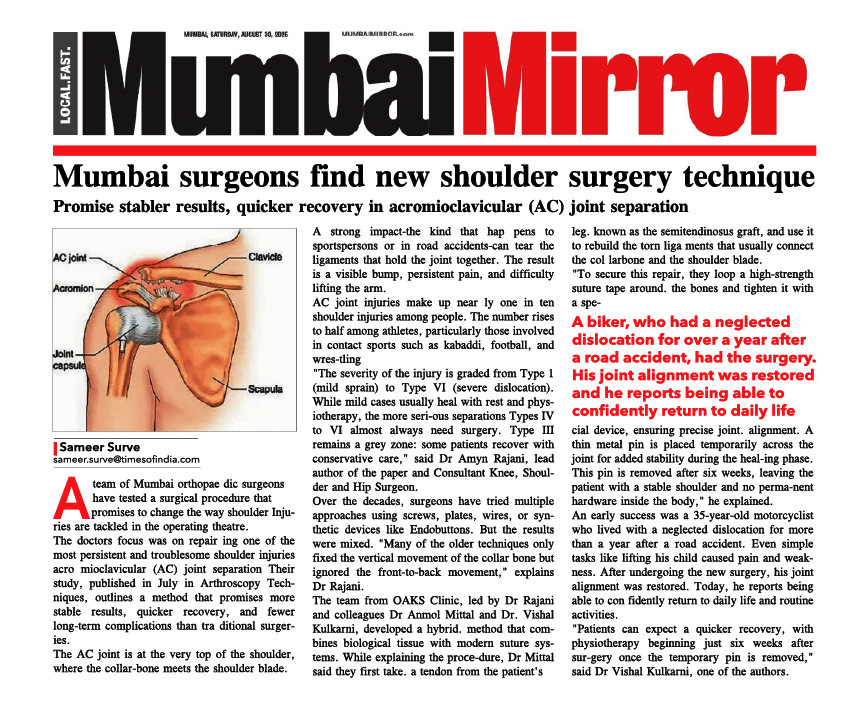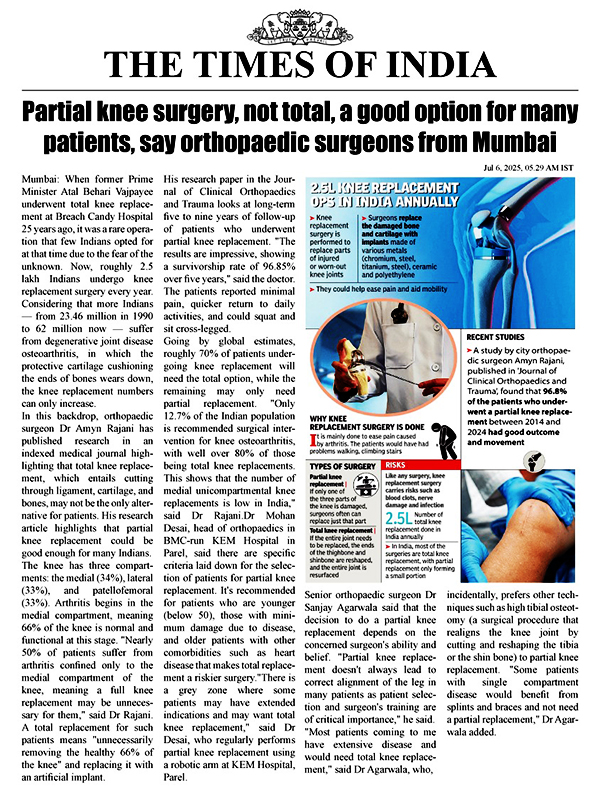Knee pain can be debilitating, affecting your mobility and quality of life. While common conditions like arthritis and ligament injuries are well-known, there are lesser-known issues like Fabella Syndrome that can cause significant discomfort. Fabella Syndrome is a condition involving the fabella, a small sesamoid bone located in the tendon behind the knee. Though not everyone has a fabella, those who do may experience pain and dysfunction if it becomes problematic. If you’re experiencing unexplained knee pain, it’s essential to consult a knee specialist in Mumbai for an accurate diagnosis and effective treatment. In this blog, we’ll explore Fabella Syndrome, its symptoms, and the best Fabella knee treatment options available.
What is Fabella Syndrome?
The fabella is a small bone embedded in the tendon of the lateral head of the gastrocnemius muscle, located behind the knee. While not everyone has this bone, studies suggest that about 10-30% of the population may have it. Fabella Syndrome occurs when this bone causes irritation, inflammation, or compression of surrounding structures, leading to pain and discomfort.
Causes of Fabella Syndrome
Fabella Syndrome is often caused by repetitive stress or trauma to the knee. Common causes include:
- Overuse of the knee joint, especially in athletes or individuals with physically demanding jobs
- Direct trauma or injury to the back of the knee
- Degenerative changes in the knee joint
- Compression of the nearby nerves or soft tissues
Symptoms of Fabella Syndrome
The symptoms of Fabella Syndrome can mimic other knee conditions, making it challenging to diagnose. Common Fabella Syndrome symptoms include:
- Pain behind the knee, especially when bending or straightening the leg
- Swelling and tenderness in the posterior knee area
- A feeling of tightness or pressure behind the knee
- Pain that worsens with activity or prolonged sitting
- Radiating pain to the calf or thigh
If you’re experiencing these symptoms, it’s crucial to consult an orthopaedic doctor in Mumbai for a thorough evaluation.
Diagnosing Fabella Syndrome
Diagnosing Fabella Syndrome can be tricky due to its rarity and overlapping symptoms with other knee conditions. A knee specialist in Mumbai will typically:
- Review Your Medical History: Discuss your symptoms, activity level, and any history of knee injuries.
- Perform a Physical Examination: Check for tenderness, swelling, and range of motion in the knee.
- Order Imaging Tests: X-rays, MRIs, or ultrasounds can help visualize the fabella and identify any abnormalities.
Treatment Options for Fabella Syndrome
The goal of Fabella Syndrome treatment is to alleviate pain and restore normal knee function. Treatment options range from conservative measures to surgical intervention, depending on the severity of the condition.
-
Conservative Treatments
- Rest and Activity Modification: Avoiding activities that exacerbate the pain can help reduce inflammation and allow the area to heal.
- Physical Therapy: A tailored exercise program can strengthen the muscles around the knee, improve flexibility, and reduce stress on the fabella.
- Pain Management: Over-the-counter pain relievers like ibuprofen or acetaminophen can help manage pain and inflammation.
- Corticosteroid Injections: Injections can provide temporary relief by reducing inflammation around the fabella.
-
Surgical Treatment
If conservative treatments fail to provide relief, surgery may be recommended. The most common surgical option is fabella excision, where the fabella is removed to eliminate the source of pain. This procedure is typically performed arthroscopically, minimizing recovery time and scarring.
Why Choose Mumbai for Fabella Syndrome Treatment?
Mumbai is home to some of the best orthopaedic surgery specialists in India, offering advanced diagnostic tools and treatment options for complex knee conditions like Fabella Syndrome. Whether you need conservative management or surgical intervention, you can expect world-class care from a joint replacement surgeon in Mumbai.
Recovery and Rehabilitation
Recovery from Fabella Syndrome depends on the treatment approach:
- Conservative Treatment: Patients may experience relief within a few weeks of starting therapy and medication.
- Surgical Treatment: Recovery from fabella excision typically takes 4-6 weeks, with physical therapy playing a crucial role in regaining strength and mobility.
Your knee specialist in Mumbai will guide you through the recovery process, ensuring optimal outcomes and a swift return to your daily activities.
Preventing Fabella Syndrome
While Fabella Syndrome cannot always be prevented, certain measures can reduce your risk:
- Avoid overuse of the knee joint, especially during high-impact activities.
- Strengthen the muscles around the knee to provide better support.
- Use proper techniques and equipment during sports or physical activities.
- Seek early treatment for any knee pain or discomfort to prevent complications.
Meet Dr. Amyn Rajani - Your Trusted Knee Specialist in Mumbai
If you’re struggling with knee pain and suspect Fabella Syndrome, Dr. Amyn Rajani is a leading orthopaedic doctor in Mumbai with extensive experience in diagnosing and treating complex knee conditions. Known for his patient-centric approach and expertise in minimally invasive techniques, Dr. Rajani has helped countless patients find relief from knee pain and regain their mobility.
Dr. Rajani’s clinic is equipped with state-of-the-art technology, ensuring accurate diagnoses and effective treatments. Whether you need conservative management or surgical intervention, Dr. Rajani provides personalized care tailored to your needs. If you’re looking for a knee specialist in Mumbai, Dr. Amyn Rajani is a name you can trust.





